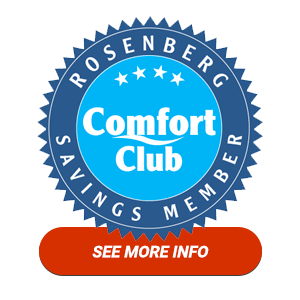If you’re like most people in San Antonio, TX, you spend about 90% of your time indoors. A majority of that time is spent in your home, which is why indoor air quality is so important. Many homeowners are disappointed that the indoor air can be up to five times more polluted than the outdoor air, even if you live close to a highway or manufacturing facility. Read on for five tips from the Environmental Protection Agency about indoor air quality and what you can do to make your indoor environment healthier, cleaner and safer.
1. Control the Sources of Indoor Air Pollution
Before you can improve the quality of your San Antonio area home’s air, you need to know where indoor air pollution comes from. Some of the biggest contributors to indoor air pollution are the everyday products in your house. These include new plastic items, dry-cleaned clothing, new upholstery with stain-resistant coatings and new furniture with varnishes or sealants. In new construction homes, drywall, flooring and particle board can be a source of pollutants. Painting, cleaning, using adhesives, cooking with oils, burning wood or coal, grilling, using a space heater and burning candles are some common activities that could pollute your home’s air. Using tobacco products indoors also contributes to poor indoor air quality. The EPA recommends minimizing these products or activities. When possible, allow new products to off-gas before bringing them indoors. When painting or using adhesives, use exhaust fans and stay away from intake vents.
2. Increase Your Home’s Ventilation
Newer homes and updated homes are often tightly sealed. While this is good for your wallet, it’s not ideal for indoor air quality. When source control isn’t feasible or sufficient, the EPA suggests adding both passive and active ventilation to your home. Some types of passive ventilation include opening multiple windows to generate a cross-breeze and installing attic vents along your roof. Active ventilation options include exhaust fans, window fans, air conditioning systems, energy recovery ventilators, heat recovery ventilators, whole-house fans and attic fans. You can use several forms of ventilation at the same time to bring more fresh air into your home.
3. Use the Best Air Filter You Can Find
Even if you limit what you bring into your home and add ventilation, there’s no way of getting around some indoor air pollutants. The EPA recommends that you use the best air filter that you can afford to install in your heating and cooling system. Air filters are rated using a scale called minimum efficiency reported value, or MERV. The MERV ratings range from 1 to 20. Air filters with a higher MERV do a better job of pulling tiny particles out of your home’s air and sequestering them until you clean or replace the filter. For the best results, check filters every month and replace them as soon as they’re dirty. Replace the filter at least every three months.
4. Schedule Professional Duct Cleaning
Although high MERV rated filters capture a lot of particles and remove them from your home’s air, they won’t catch everything. It’s also possible for pests or wild animals to get into your home’s ducts or vents, causing a blockage or adding debris that lowers your home’s indoor air quality. If anyone in your home has dust allergies or asthma, consider yearly duct cleaning. Most homes should have duct cleaning performed at least every three years. Removing the layers of dust and grime from the air ducts improves indoor air quality and the performance of your heating and air conditioning system.
5. Consider an Air Cleaner
Air purifiers and cleaners can capture or inactivate the viruses, bacteria and particles that are missed by air filters. They’re designed to eliminate the germs in respiratory droplets when someone coughs or sneezes. Air purifiers can also remove foul pet odors, cooking fumes and musty smells from your home’s air. The EPA suggests installing a whole-house air purifier as part of a multi-pronged strategy for improving indoor air quality.
The NATE-certified technicians at Rosenberg Plumbing & Air are the trusted source of indoor air quality solutions in San Antonio. We’re also prepared to provide your home or business with affordable heating and air conditioning maintenance, repair, replacement or installation services. Customers also turn to us for ice machines, dehumidifiers, low-temperature freezers and UV air sanitizers. To learn more or schedule one of our services, contact us at Rosenberg Plumbing & Air today.
Tags: EPA guidlines, Healthy Air, Indoor Air Quality
